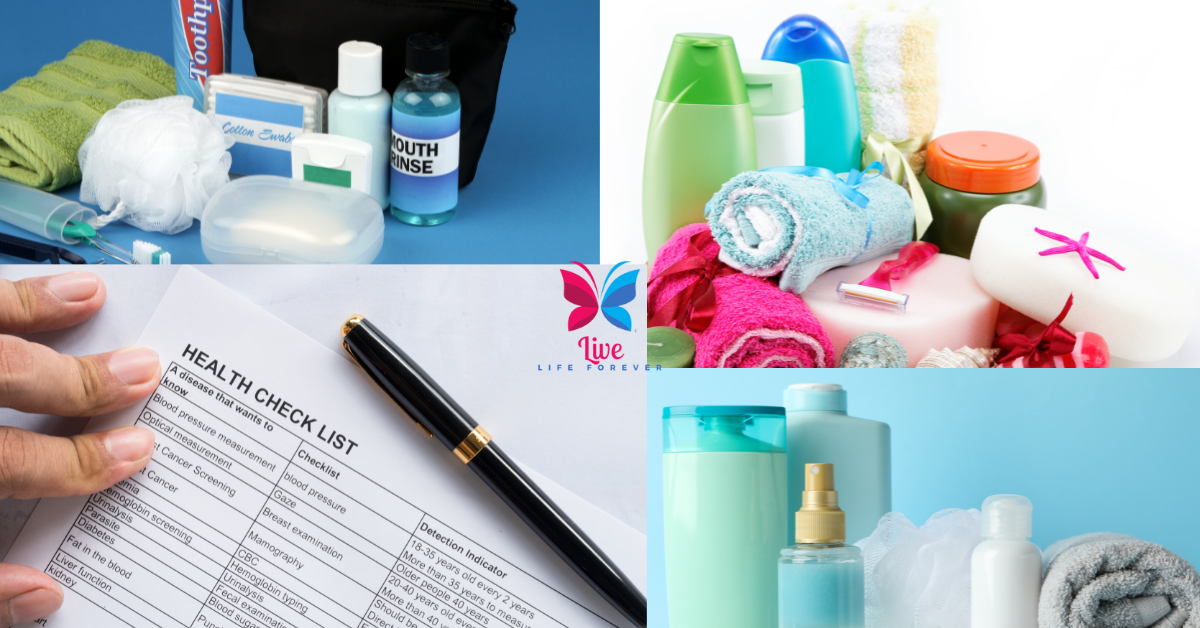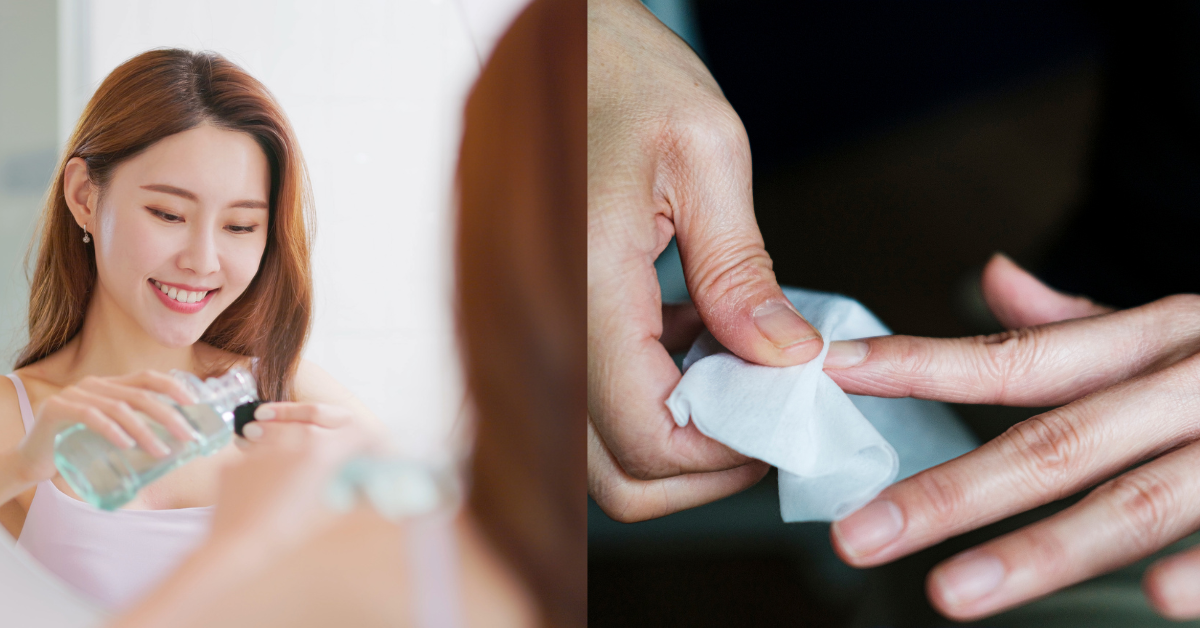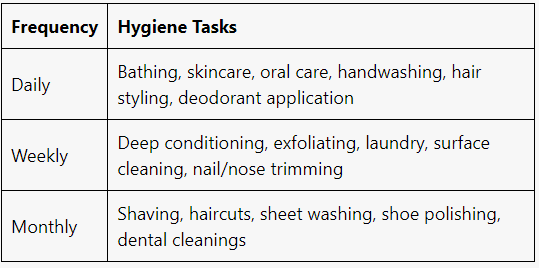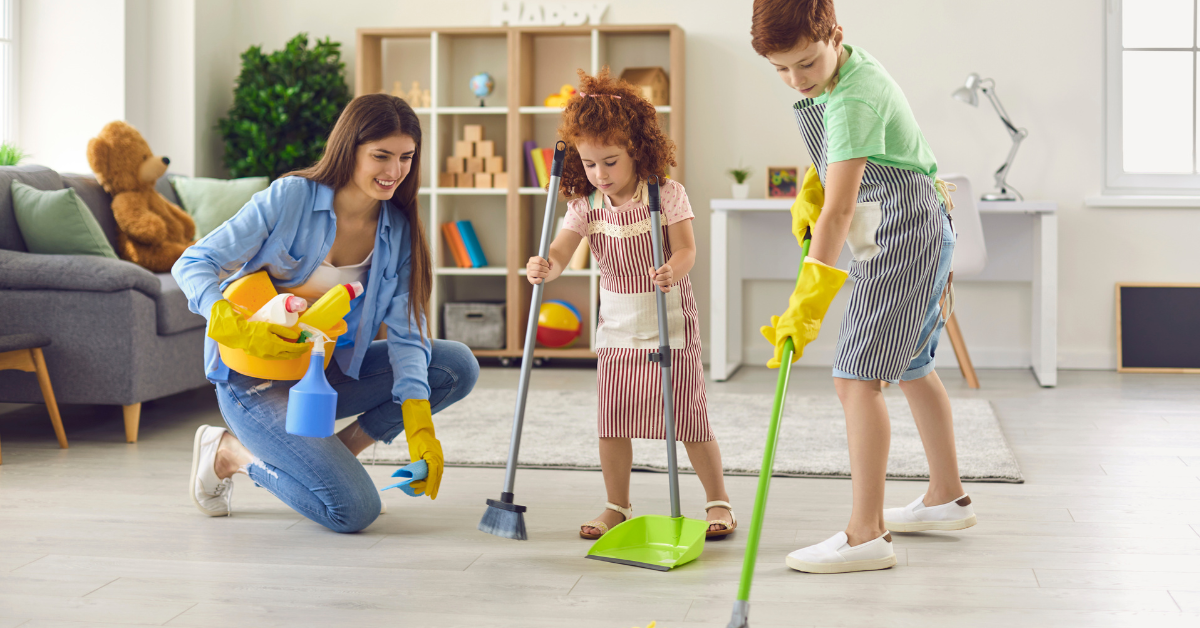Personal Hygiene Checklist


Your Essential Personal Hygiene Checklist
Maintaining good personal hygiene is important for both your physical and mental well-being. However, with busy modern lifestyles, it can be easy to overlook key hygiene habits. This comprehensive personal hygiene checklist provides guidance on the fundamental daily, weekly, and monthly routines you should follow to stay clean, fresh, and healthy. Including tips from dermatologists and lifestyle experts, this checklist will help you prioritize hygiene efficiently without feeling overwhelmed.
Daily Hygiene Habits
The basics you should aim to complete each morning and evening include:
Bathing: Most adults aim for a daily shower.[1] Be sure to thoroughly wash your entire body and hair with soap or body wash to remove dirt, sweat and odors.
Face cleansing: Gently wash your face with a mild cleanser suited to your skin type to remove oils and impurities.[2] Avoid over-washing which can dry out skin.
Toothbrushing: Brush your teeth twice per day with fluoride toothpaste for 2 minutes each time to promote oral health and fresh breath. Floss once daily.[3]
Hand washing: Wash hands with soap and water for 20 seconds after using the bathroom, before eating, cooking or caring for someone who is sick.[4]
Styling hair: Brush or style your hair so it lays flat and looks neat. Wash hair whenever it gets visibly dirty or oily.
Deodorant: Apply an antiperspirant deodorant in the morning after showering underarms to prevent body odor from sweat. Reapply as needed.[5]
Nail care: Trim and file fingernails and toenails straight across to promote cleanliness. Wash under nails when bathing.[6]
Sticking to these hygiene habits every morning and evening is key for avoiding bad odors, grooming properly, and preventing infections. Consistency helps form healthy routines.
Weekly Hygiene Habits
Tasks to aim for once per week include:
Deep condition hair: Once weekly, do a hair mask treatment for 5-10 minutes before rinsing out to hydrate and repair damaged strands.[7]
Exfoliate body: Gently exfoliate your body 1-2 times per week using a soft bristle body brush or exfoliating scrub/mitt to slough off dead skin.[8]
Clean clothes: Wash clothing, towels, bedsheets and other fabrics weekly in hot water cycles using an effective laundry detergent.[9]
Disinfect surfaces: Use disinfectant wipes or sprays to sanitize commonly touched surfaces like doorknobs, light switches, faucets and devices.[10]
Trim nose/ear hair: Use clean trimmers once weekly to tidy up stray nose and ear hairs that can harbor bacteria and seem unkempt.[11]
Sticking to these tasks supports good hygiene without being too tedious. Deeper cleans help avoid bacterial buildup.

Monthly Hygiene Care
Dedicate some time monthly for these hygienic tasks:
Shave legs/underarms: Exfoliate before shaving to avoid ingrown hairs. Use a hydrating shaving cream or oil and a sharp, clean razor.[12]
Trim split ends: Once hair grows longer, trim 1⁄4 inch of split ends monthly with hair shears to promote healthy hair growth.[13]
Clean sheets: Launder bed sheets and pillowcases monthly beyond regular weekly laundry loads to keep sleeping areas fresh and hygienic.[14]
Polish shoes: Polish leather shoes to protect the material and present a neat appearance for important meetings or events.[15]
Dental cleaning: See your dentist every 6 months for professional cleanings to catch early signs of cavities or gum disease not visible at home.[16]
Staying on top of these tasks supports self-care, grooming presentation and prevents bacterial or fungal infections over time through deep cleaning.
The chart below summarizes personal hygiene tasks by frequency:

Tailoring Your Routine
While the guidelines above cover standard personal care most can follow, individual needs vary based on lifestyle, culture, practices and environment. Consider adjusting your hygiene routine based on factors like:
Climate/season: Shower more in hot/humid climates. Moisturize well in cold, dry climates.
Activity level: Sweat more? Increase showering frequency and carry wet wipes or dry shampoo when needed between.
Hair texture: Tighter curls may need daily conditioner. Looser curls could space washing to twice weekly.
Skin type: Oily skin may need face cleansing twice daily versus sensitive skin once at night only.
Beard care: Growers need weekly conditioning and trimming along contours for neatness.
Spiritual practices: Some religions involve specific hair, bathing or laundering rites on certain occasions.
Occupation: Manual labor, health workers and food staff often need more frequent handwashing.
Listening to your body and adjusting as needed based on circumstances is important for maintaining good hygiene conveniently. Consult others with similar factors too for routine tips.
Overcoming Hygiene Habits challenges
Sticking to personal hygiene, especially when depressed, isn’t always easy. Some common challenges include:[17]
Lack of motivation: Feeling weary or depressed can make tasks seem overwhelming
Forgetfulness: Busy schedules disrupt routines leaving things undone
Shyness: Self-conscious about hygienic issues or body image prevents adequate care
Laziness: Wanting ease and instant gratification discourages committing to rituals
Illness/disability: Medical conditions limit independence with cleaning abilities
To build habits when facing obstacles:
- Start with 1-2 essential daily tasks and gradually add more as they stick
- Use reminders, checklists, accountability partners
- Make tasks quick, stress-free rituals built into existing routines
- Outsource help temporarily if needed due adjustments like surgery recovery
- Seek treatment for clinical depression blocking motivation
- Be gentle with yourself through setbacks as consistency is the goal
With time and patience, hygiene becomes second nature improving self-esteem and daily life quality regardless of past challenges. Speak to a doctor or therapist if issues persist severely.
Answering Common Hygiene FAQs
Some frequently asked questions on personal hygiene include:
How often should I shower?
Most adults aim for daily showering, though those with drier skin can space it to every other day. Sweatier individuals may need more frequent cleansing.
How do I stay fresh between showers?
If activity causes sweating but a shower isn’t possible, use baby wipes, dry shampoo/deodorant, and a quick sink bath of face and sensitive areas.
How do I unclog pores?
Regular exfoliation helps prevent blackheads and whiteheads. Use a chemical or physical exfoliant 1-3 times weekly based on skin’s tolerance.
What’s the cleanest way to wash laundry?
Use warm or hot water, avoid overcrowding the machine, and add 1⁄2 cup of bleach or vinegar to sanitize loads without harsh chemicals ruining colors.
How do I naturally whiten teeth?
Rubbing baking soda or activated charcoal gently on teeth with a wet toothbrush can strip stains without abrasion risking enamel like whitening strips. Rinse thoroughly after.
What are the benefits of a clean home?
Disinfecting frequently-touched surfaces and laundering items like towels and sheets weekly removes bacteria and allergens improving indoor air quality and health. Consider professional cleaning quarterly.
Addressing common personal care questions empowers taking control of hygiene knowledgeably. People should feel comfortable maintaining standards aligning with individual needs.





